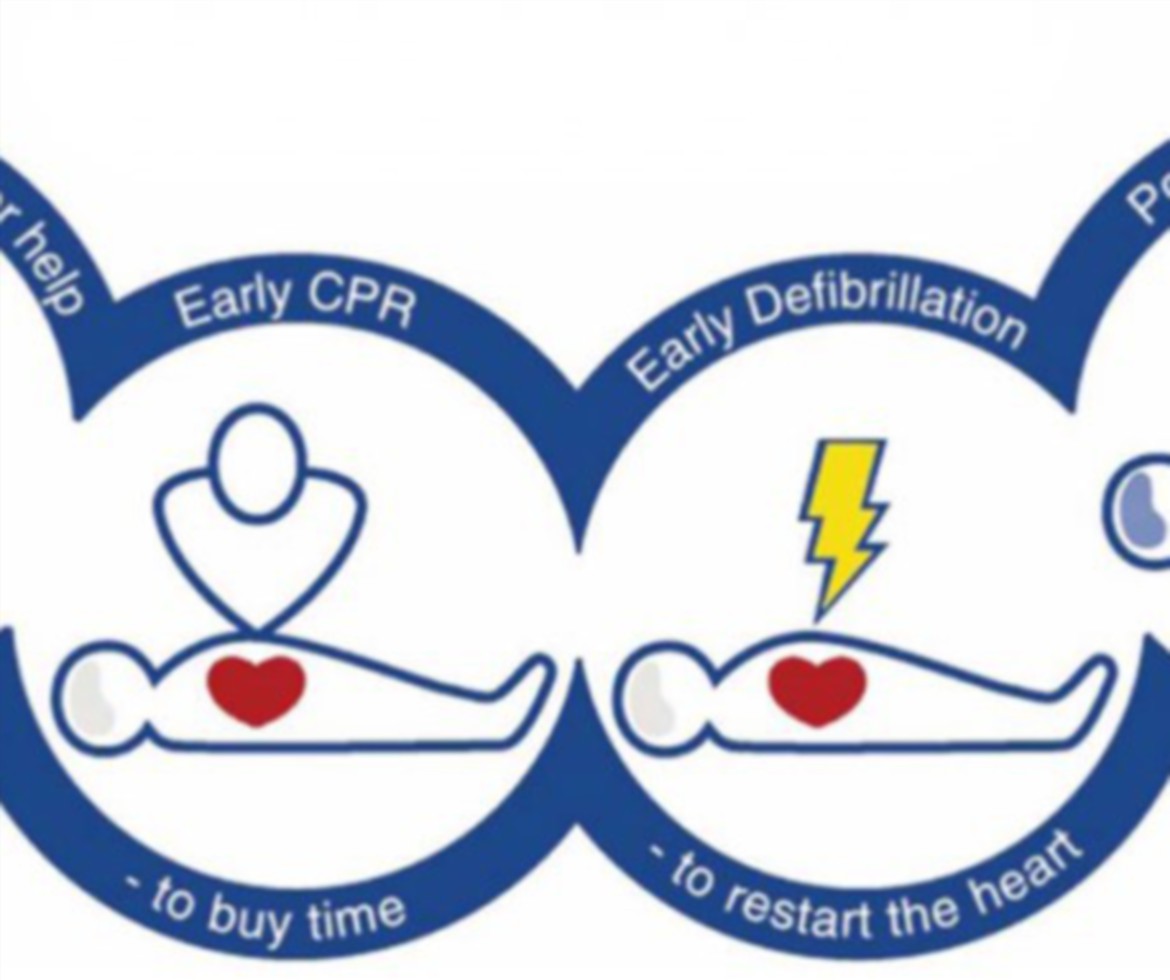MANY GAA clubs in Ulster have put in place a piece of equipment which could help save lives. The equipment is an Automated External Defibrillator (AED), a portable device that checks the heart rhythm.
If needed, it can send an electric shock to the heart to try to restore a normal rhythm. AEDs are used to treat sudden cardiac arrest (SCA), a condition in which the heart suddenly stops beating.
In NI each year over 1,400 people suffer an out-of-hospital cardiac (OHCA) arrest; with only 10 per cent of these surviving to be discharged from hospital (Community Resuscitation Strategy for NI, 2013). This is something which can be improved upon by equipping members of the wider community with the key skills needed in the early stages of the ‘Chain of Survival.’
Cardiopulmonary Resuscitation (CPR) is an essential step to buy the casualty time until professional help arrives. Clubs should have members trained in CPR and AED-use, although prior training in AED-use is not essential to effectively use an AED.
The main image shows the links of the ‘Chain of Survival.’
In order for the AED to be effective, the heart must be in a ‘shockable’ rhythm, therefore not every casualty who collapses will benefit from the use of the defibrillator. In these instances, good quality CPR (Cardiopulmonary Resuscitation) is the best lifeline a first responder can offer until professional help arrives. Once the AED pads are placed on the casualty the device will determine whether or not to administer a shock – so you will never be left shocking someone and doing more harm.
According to a recent report, 42 lives have been saved by AEDs located at GAA grounds.
In order to ensure that the equipment is in best working order and it’s users confident should they be called upon, the following guidelines should be considered. It is also important to note that The Community Resuscitation Strategy has identified that devices obtained prior to 2008 should be considered obsolete and measures should be taken to replace such equipment.
Since 2016, Sport NI has supported 176 GAA clubs in replacing old AEDs through a simple application process. Recently Armagh Banbridge and Craigavon Council launched a funding programme to enable groups, such as GAA clubs, to part-fund the purchase of a publicly accessible AED. More details can be found at: https:armaghbanbridgecraigavon.eformz.info
For clubs in the six counties, it is imperative that all AEDs are registered on The Circuit. This database is managed by the BHF and allows emergency call handlers to direct first responders to the nearest AED when someone calls 999. This information is invaluable in getting the appropriate help to a casualty in the quickest time possible. Please check that your AED is registered by visiting the following link: https:www.thecircuit.uk.
Accessibility:
It is essential to properly store and maintain a club AED as the performance of the defibrillator may be compromised if the recommendations are ignored. It is important that your AED is accessible, and registered on The Circuit (for clubs in the six counties).
In order to prevent damage, wall mounting is preferable though not essential. It is advised that the AED should not be kept under lock and key. However, if kept in an area which is locked, keys must be convenient to hand. Heated, alarmed cabinets are available for outside storage should it be required.
Checking:
Ideally the Club should appoint an officerofficers who will be responsible for checking that the defibrillator is in proper working order and that and the necessary components are present. Manufacturers will provide recommendations on this but as a guideline the following should apply:
On a daily (ideally) or weekly (minimum) basis, the battery should be checked along with the pad’s expiry date.
Additionally, the following items should also be present to ensure the casualty has the best chance of survival; spare pads; paediatric pads; face mask, scissors, razor and towel.
In the event of the AED being used or expiration of pads, an immediate re-order should be placed. It is best practice that a record of checks is kept alongside the AED so that the club can monitor how often the device and its components are being checked.
Training:
AEDs have been designed for use by laypersons who have received AEDCPR training. When in use, they give clear audio and visual commands as to whether or not a shock is advised. It is important to have a group of dedicated personnel within the club or community who receive initial training and are refreshed again at least once a year (although best practice would suggest every six months). Training should be delivered by an accredited organisation or person and contents should be in accordance with recommendations as set by the appropriate Resuscitation Council or Association.
It is essential that the wider club and community are aware of who the trained users are and how to contact them in the event of an emergency. Posting names and contact details in appropriate places is important to ensure this happens.
It is also recommended that a dedicated list of AED-trained individuals should be kept adjacent to the AED with phone numbers. However, AEDs can be effectively used without any prior training, thus an untrained person should not delay in using an AED if no other imminent help is available.
In the event of the AED being used it is important that the club holds a debrief on its protocols, prepare for a re-order of batterypads and offer support as is required to the person or persons who used the equipment.
Any club seeking more information should contact maura.mcmenamin.ulster@gaa.ie.
Receive quality journalism wherever you are, on any device. Keep up to date from the comfort of your own home with a digital subscription.
Any time | Any place | Anywhere












